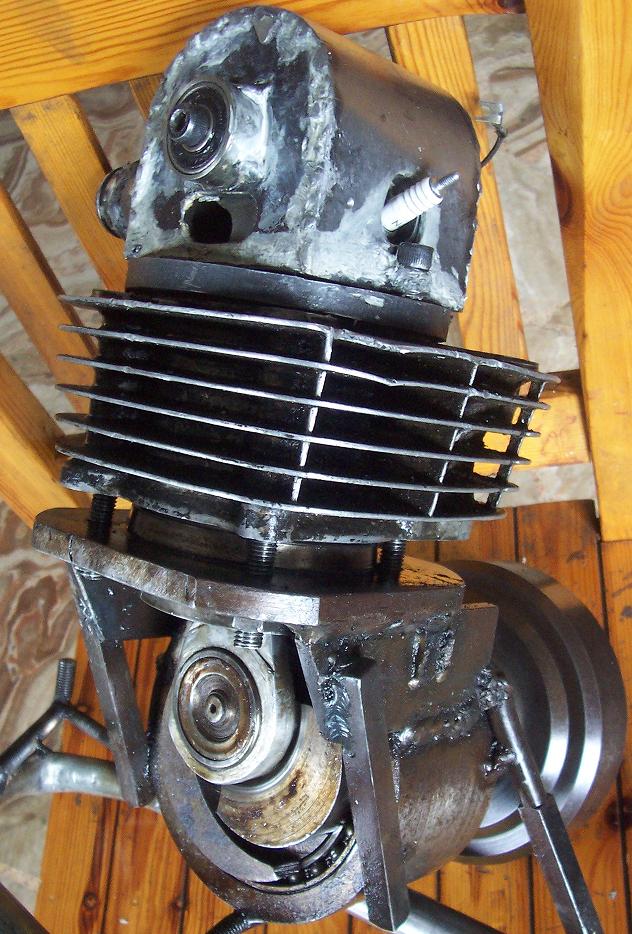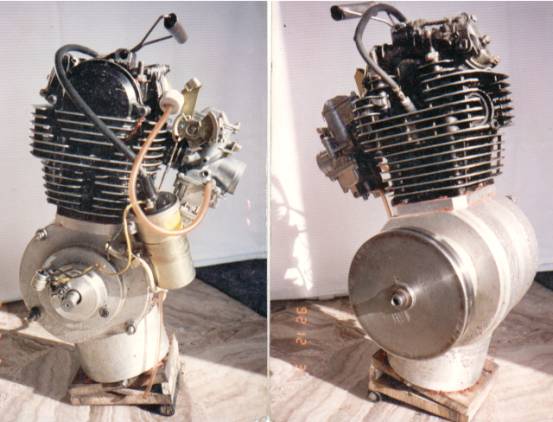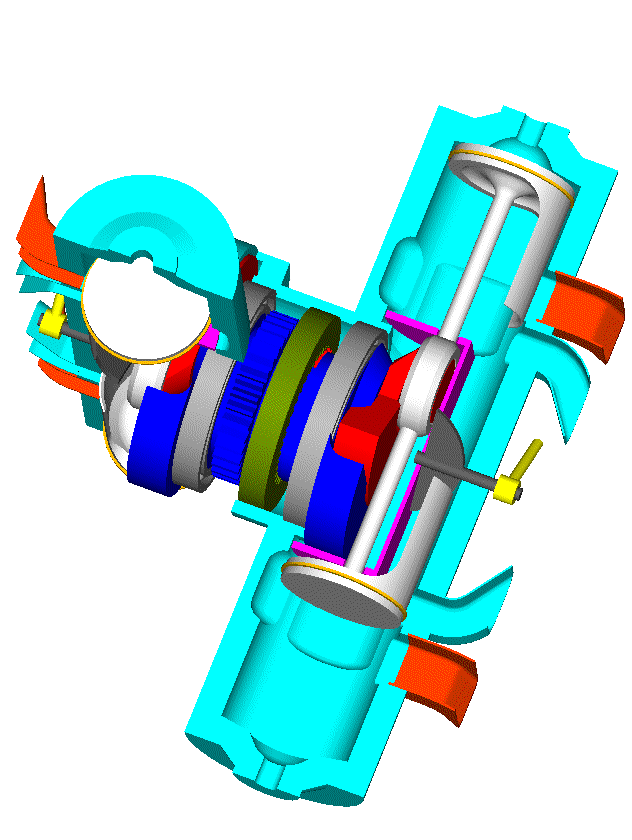By 1940 Ricardo had 5 2 stroke test engines.
There were two E.65 single cylinder engines, using the open ended sleeve.
There was a Rolls-Royce Crecy V-2 development engine, being run in single cylinder form (known at Ricardo as the RR/4).
There was a single cylinder development based on the E.65 but with a junkhead being developed by Napiers.
And the E.54, which was a single cylinder built by Ricardo with Crecy stroke and bore.
Apparently a report by Ricardo in 1941 indicated that there were issues with the junkhead arrangement with failure of the sealing rings. Napier's scheme was for an H-24 of similar layout to teh Sabre, but 2 stroke and 3000hp target. Napiers abandoned their work in 1942 to concentrate on the Sabre.
The E.65 particulars were:
Sleeve Bore: 4.81" (122.174mm)
Cylinder Bore (Sleeve OD): 5.01" (127.254mm)
Stroke: 5.5" (139.7mm)
Sleeve Stroke: 1.5" (38.1mm)
Swept Volume: 99.9cid (1.64l)
The E.54 specs were:
Sleeve Bore: 5.10" (129.54mm)
Cylinder Bore (Sleeve OD): 5.34" (135.636mm)
Stroke: 6.5" (165.1mm)
Sleeve Stroke: 1.75" (44.45mm)
Swept Volume: 132.8cid (2.18l)
The Crecy specifications were:
Sleeve Bore: 5.10" (129.54mm)
Cylinder Bore (Sleeve OD): 5.34" (135.636mm)
Stroke: 6.5" (165.1mm)
Sleeve Stroke: 1.95" (49.53mm)
Swept Volume: 1593cid (26.11l)
Supercharger Diameter: 11.7" (297.18mm)
Supercharger Gear Ratio: 8.77:1 (originally 7.65:1)
Boost: +18psi
Sleeve Material: KE.965 (later NMC)
Cylinder Material: RR.50
Dry Weight: 1650lb (748.4kg)
Dry Weight with turbine: 1800lb (816.5kg)
Dry Weight with turbine and CR props: 1900lb (861.8kg)
The Crecy was around the same weight as a 2-stage Merlin. The supercharger was smaller than the 1st stage in a 2 stage Merlin (12"for most models) but larger than the 2nd stage (10.1").
KE.965 Special Valve Steel | Flight Archive
Hiduminium R.R. Alloys | Flight Archive
I can't find anything on the NMC steel as yet.
Ratings (without Turbine)
Combat and Take-off: 1768hp, 2750rpm, +15psi boost, 323lb exhaust thrust
Max Climb: 1605hp, 2750rpm, +12psi boost, 315lb exhaust thrust, @5,000ft
Max Cruise: 1422hp, 2500rpm, +10psi boost, 285lb exhaust thrust, @10,000ft
Economy Cruise: 1125hp, 2500rpm, +10psi boost, 229lb exhaust thrust, @10,000ft
Ratings (with Turbine)
Take-off: 2729hp, 3000rpm, +24psi boost, 287lb exhaust thrust
Max Climb: 2513hp, 3000rpm, +20psi boost, 322lb exhaust thrust, @10,000ft
Max Cruise: 2070hp, 2750rpm, +15psi boost, 238lb exhaust thrust, @10,000ft
Economy Cruise: 1827hp, 2750rpm, +15psi boost, 226lb exhaust thrust, @10,000ft
There were 8 V-2 engines constructed. No.1 and No.2 were Compression Ignition (CI) types, the remainder were Petrol Injection (PI) types. No.2 was converted to PI a some point in its life. No.4 went to Ricardo, No.6 went to the RAE for altitude testing (must have had an altitude chamber).
There were 6 main (V-12) engines numbered 2, 4, 6, 8, 10 & 12.
2 and 4 were built as Mk Is. 2 was converted to Mk II by early 1943 (started testing in that configuration on 26 February 1943).
6, 8, 10 & 12 were built as Mk IIs.
Total running time on all 6 engines was 1705.28 hours.
The Crecy I had integral cylinder block and head. There were problems with this arrangment, so the Crecy II was evolved with seprate cylinder heads - 1 for each cylinder.
The turbine used for exhaust energy recovery was a 50% scale version of that used in the Whittle jets being developed at the time at Rolls-Royce. It was geared to the crankshaft, bt I'm not sure if it was a fixed ratio or variable speed.
Data is from Nahum, Forster-Pegg and Birch,
The Rolls-Royce Crecy, Rolls-Royce Heritage Trust, Historical Series No 21.



